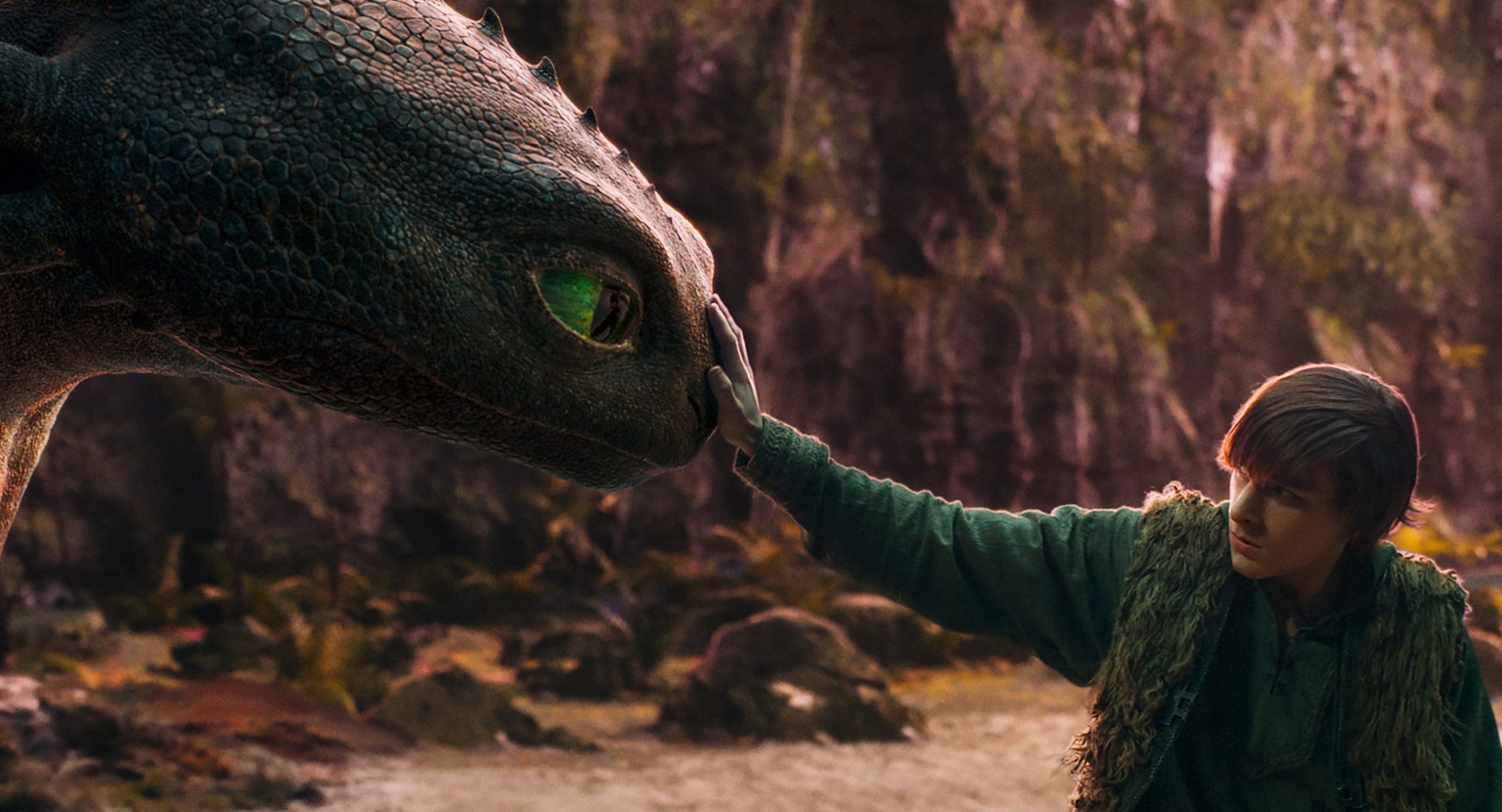How to Train Your Dragon – Film Review
Published June 14, 2025

Dean DeBlois’ 2025 live-action remake of How to Train Your Dragon is a thrilling, emotionally resonant triumph—an example of how to honor the soul of a beloved animated film while elevating it with newfound texture, nuance, and cinematic weight. With stunning performances from rising stars Mason Thames and Nico Parker, a heartfelt return from Gerard Butler, and awe-inspiring dragon visuals, this reimagining doesn’t just ride the coattails of its predecessor—it flies with its own wings.
For those familiar with the 2010 DreamWorks animated film or Cressida Cowell’s original novel, the story remains largely intact—but the live-action format gives it a more grounded, tactile edge. The windswept cliffs of Berk, the ominous forests, and the fiery lairs of dragons are rendered with gorgeous cinematography that brings the world of Vikings and dragons to life in a way animation could only suggest.
DeBlois—returning as co-writer and now live-action director—understands the delicate balance of spectacle and character. He wisely retains the core story: Hiccup, a brainy and physically slight misfit, finds his place not through violence but through compassion, intellect, and courage. When Hiccup wounds a Night Fury during a dragon raid but chooses to spare its life, he sets in motion a narrative about empathy and change, not domination—a timeless message made more resonant in a gritty live-action setting.
Mason Thames (The Black Phone) gives a stellar performance as Hiccup Horrendous Haddock III, carrying the film on his narrow shoulders with a mix of vulnerability, wit, and defiance. His chemistry with Nico Parker’s Astrid is both gentle and fiery; their evolution from rivals to tentative partners is believable and rewarding. Parker, with her flinty strength and expressive depth, makes Astrid more than just a love interest—she’s a moral compass and an equal in Hiccup’s journey of self-discovery.
Gerard Butler’s return as Stoick the Vast is not merely fan service—it’s inspired. A decade later, his voice and physicality still command authority, but here, his performance is more emotionally layered. The father-son dynamic feels less cartoonish and more tragic, making the eventual reconciliation a moment of true catharsis.
Supporting performances from Nick Frost (as the boisterous Gobber), Julian Dennison (as an endearing Fishlegs), and Harry Trevaldwyn and Bronwyn James (as the mischievous Ruffnut and Tuffnut) bring levity and warmth to the darker corners of the story.
One of the greatest challenges in adapting How to Train Your Dragon to live action was undoubtedly translating the expressive, catlike charm of Toothless into a photorealistic creature without losing the emotional bond with Hiccup. The result is a triumph of visual effects and animation direction. Toothless is a marvel—sleek, enigmatic, dangerous, and utterly lovable. The film’s central relationship between boy and dragon is delicately portrayed, with no words but boundless emotion in every shared glance and aerial loop.
The flight sequences are breathtaking. Whether soaring over oceans or navigating the smoky chaos of the Red Death’s lair, the action is fluid and heart-pounding. But it’s not just the flying that dazzles—it’s the small moments. A tentative touch. A shared fish. A shy grin. These scenes are handled with care and intimacy, adding layers of humanity to a story of fantasy.
The climax involving the monstrous Red Death is just as spectacular as its animated counterpart, but now it carries a heavier sense of peril. The behemoth dragon is terrifying in scale and sound, and its final battle with Hiccup and Toothless is a stunning example of practical set design blending seamlessly with CGI.
What stands out most in the film’s action is its clarity—DeBlois never lets effects drown out emotion. Every confrontation is tied to a character’s arc: Stoick’s realization that his son’s compassion is a strength, Astrid’s shift from warrior to partner, and Hiccup’s own understanding that leadership is earned not by slaying dragons, but by uniting with them.
In the age of remakes, How to Train Your Dragon could have easily felt like a cash-grab. Instead, it emerges as a deeply felt, gorgeously crafted tale of empathy, identity, and coexistence. The transition from animation to live action adds a rawness to the story’s core themes. Hiccup’s journey—both physical and emotional—feels more grounded, more painful, and ultimately more triumphant.
The film doesn’t shy away from loss or consequence. Hiccup’s injury at the end, and the resulting prosthetic, is handled with quiet dignity. It’s not a tacked-on lesson about bravery, but a lived-in reality that deepens his bond with Toothless, who also bears a wound. Together, they become symbols of resilience and interdependence.
If there’s a critique to be made, it’s a minor one: at times, the film’s tonal shifts can feel abrupt. The humor—while charming—sometimes rubs up awkwardly against the film’s more dramatic moments. And while most supporting characters are well fleshed out, a few (like Snotlout or the twins) could’ve benefited from sharper development.
Still, these are quibbles in an otherwise stellar production. The score by John Powell (reorchestrated for live action) retains its soaring majesty, and the direction, pacing, and world-building are nothing short of impressive.
Dean DeBlois’ live-action How to Train Your Dragon is a remake done with reverence, vision, and heart. Bolstered by strong performances, remarkable effects, and an undying emotional core, the film proves that some stories truly are timeless. It may be a remake, but it soars high enough to justify its own existence—and then some.
A masterful blend of fantasy, adventure, and heart, How to Train Your Dragon (2025) is one of the rare live-action adaptations that not only honors its animated predecessor but may, in some ways, even surpass it.
